 “There is no such thing as Zero- Budget Growth Hacking” announced Ravi Trivedi at our last webinar. The Founder of the SAAS company PushEngage calmly pointed out that every strategy that you come up with will require some resources – be it seed amount to kickstart the campaign or long man-hours to ensure it’s functionality. Which is why, he rather prefers growth hack tips ‘with a limited budget’ instead of ‘Free’ growth hacking.
“There is no such thing as Zero- Budget Growth Hacking” announced Ravi Trivedi at our last webinar. The Founder of the SAAS company PushEngage calmly pointed out that every strategy that you come up with will require some resources – be it seed amount to kickstart the campaign or long man-hours to ensure it’s functionality. Which is why, he rather prefers growth hack tips ‘with a limited budget’ instead of ‘Free’ growth hacking.
And how does one arrive at perfect Growth hacking? Well, that is what Ravi Trivedi explains at this webinar. Drawing from his vast experience and considerable success, Ravi – a true digital marketer at heart educated the audience on some quick tips for growth hacking.
In a hurry? Well, you can always get a glimpse of what was covered in the session from the questions below.
How did the word Growth-Hack come into existence?
It was Shawn Ellis who coined the term Growth -Hacking. It came into existence a couple of years back when a lot of experimentation across marketing and selling channels happened. Some worked. Some worked amazingly well! With every experiment, the marketers learned a tiny tip that makes a big impact on their business growth, a small idea/hack that boosts the growth of the business. And thus, the word Growth-Hack was born!
In high end fashion clothing, where there are already lots of players, what specific tactics do you suggest?
First identify your target audience. Are you selling to NRI’s? Indians? Or everybody? Based on this, your strategy will change. Typically, for jewelry and clothing, I have found that Facebook is the most powerful medium (experience!). So that is the primary medium you can focus on. Depending on your business requirements, you might have to dig deeper and sort out the details.
Another area of interest for you would be Content Marketing. I am a big believer in content-driven marketing. Try creating content websites for cross selling or up selling. The “Latest Fashion” or “Trendy Clothes for you” page can be great in pulling in traffic for your site. Soft selling methods like these can help you get converting people in no time.
Google Trends is great. But is there any way to predict the search trends well in advance?
Well, that is a good question. Because if you see it on Google Trends, then it is already too late. This is how the trend page looks like:
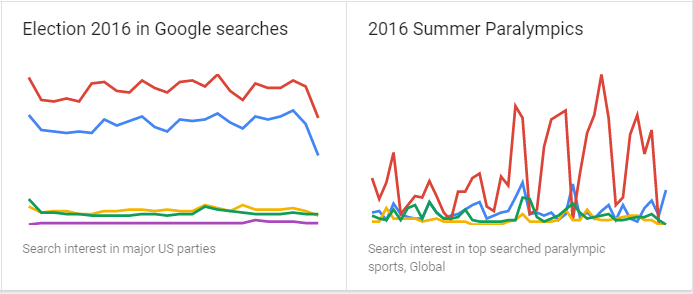
The idea behind trend prediction is that if you are able to predict it, then you can be the first to contribute content for that aspect. Needless to say, that will help your SEO rankings drastically.
Typically, a good understanding of the industry and your role in it are essential before trend prediction. That way trend prediction can happen without tools. For eg. in the education industry, watch out for back-to-school trend or the exam coaching/result trend. If your product is centered around coaching, then you might want to boost content creation and Ads during this time.
For the finance industry, perhaps the financial year end and beginning can mean new things. Or when the Country’s budget is announced. Similarly, the wellness industry can anticipate trends like “Holiday weight loss” etc.
Just a note – that is not to say that Google Trends won’t work. It definitely will help you. But for a’growth hack’ I strongly suggest you look to other means of predicting trends in your industry and creating content for it, before anybody else does. By the time the prediction catches up, your content will already be the no.1 in the SERP. Now, won’t that be pretty cool?
What hacks do you suggest for online search queries, following a print campaign?
Always remember to align your offline and online activities. If you have already decided on rolling out a print campaign, online hacks can come in even before the campaign rolls out. The key is anticipating the impact of your print campaign and preparing your online activities accordingly.
Let us suppose that you are publishing an ad in the first page of the newspaper tomorrow. It will definitely attract lot of eyeballs and the search terms related to that ad will spike online, after the ad is released. Now, if you have predicted this outcome, then you could also have published good-quality content online, with these particular search terms as keywords! As a result, your website gets higher up the SERP whenever the search terms are hit.
Push-based browsers are irritating to some users. What is your view on that?
Well, push-based notifications cannot be used as a replacement for any other method that you have in place – even email. In fact, push notifications are deemed the no.1 reason for an App un-install. Here is an example of LeadSquared push notification in your phone:
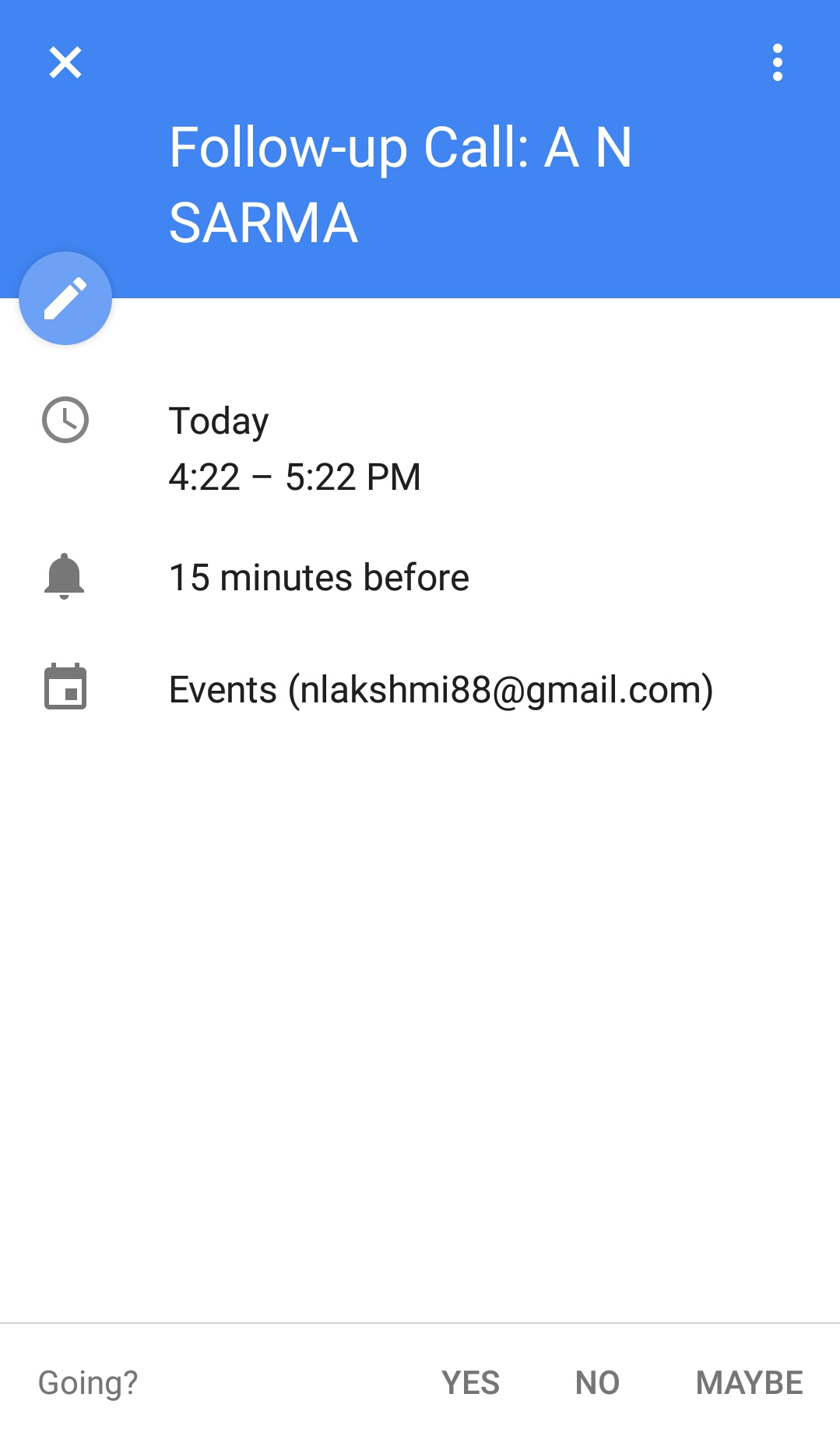
However, push notifications can also boost your ROI. So the best way to go about it would be to understand your user. Notifications are intent driven – therefore important messages that incite a sense of urgency and curiosity with the user while adding genuine value are the kind that will drive more traffic and conversions than un-installs. This article on Moment Marketing by Business Opportunites.biz has more tips.
Would MBA institutes need Push Browsers? What content will go in there?
Push notifications on the open web is a no-brainer for most B2C companies. For the education industry, it is a definite must-have.
You can send out alerts once the admission form for a particular course is available again. You can also notify users about new material published, based on their previous search interest.
During the admission season you can send them information about the opportunities in your institute. Do you have a great alumini association? Articles or interviews from successful aluminis from your institutions can also be sent as alerts every time they are published.
Before the exam season, you can send them tips on how to crack the CAT or any other syllabus related hacks that would help your student.
Remember, the content can be of two types – a) informative (in which case you can be a thought leader) or b) a little bit about your institute – the life there, the future opportunities, what your aluminus has to say etc. Depending upon the trend at that time, employ what you think is the best!
Which method should we apply to get more leads for B2B when the keyword search volume is low?
If your keyword volume is low, it means that your target audience is not looking for you through that channel.

The obvious answer then would be to take it to them instead of waiting for them to hit search.
Follow these 3 simple steps:
a) Identify the business you are in – within 140 twitter characters
Twitter blast is an effective method to reach new audience. However, without the right hashtag (#), your tweet can be lost in the million other tweets that get tweeted daily. So do some basic research and write out how best you can represent your business in 140 characters that is of interest to your target audience.
b) Identify your target audience
Find out whom you want to sell to. Define your audience persona. The typical target audience will find your content extremely relevant and highly useful.
c) Identify where they “Hang-out”
Is it specific online communities? Or certain meetings or conferences offline? For eg. if your target audience are start-ups, then you should be attending more start-up conferences and events.
d) Check out offline and online strategies
Once you have done all the above, you can experiment with both offline and online strategies to enable maximum reach. As ever, try to align these two mediums so as to maximize your chances of lead conversion.
Any specific online hacks for high- end hospitality hotels?
As always, content is your best friend. Get to creating great content. But before you distribute them en masse, identify your target audience. It all comes down to that.
Let me share an example. Typically, couples on a honey-moon are great targets for high-end hotels. They have a greater propensity to spend more and thus more willing to convert. So go ahead plan specific campaigns (both online and offline) depending on where you can reach your audience best.
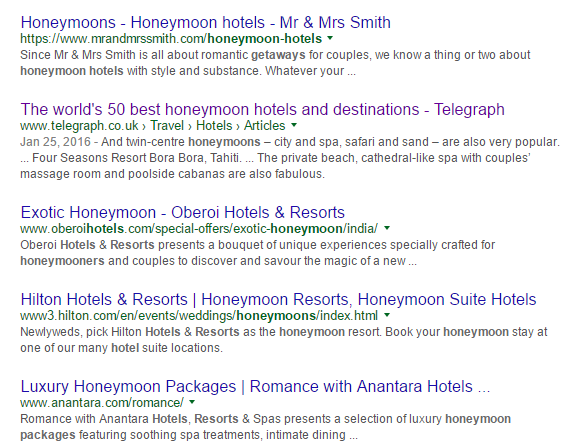
Also, identify the key indicators that can help you recognize a lead that belongs to your target segment. In this case – it could mean finding out how to predict whether a particular person is going to get married.
Then target the leads through Google AdWords, Facebook Ad campaigns and other effective channels, based on your research as well.
I have a niche target audience of 20-22 yr old. They are tech-savvy. Yet, I am unable to generate the traffic I would like. How can I improve that?
With Facebook, begin with a decent budget of at least 1000K. Remember, you might have to overspend in the beginning so that traffic comes to your site. Get your ad copy right so that your CTR is more that 1% (anything below is not great). Once you have attracted the audience to your site, keep them engaged with great content.
When of both these happen, your quality score will keep increasing. Even a 6/10 is only average. With a 10/10 quality score and a high CTR, you will be able to drive huge amounts of traffic (less than 10p per click).
How would you target audience without a digital foot-print?
Let me tell you a secret – the digital world is not a silver bullet for all. If your audience are not online and do not have a digital foot-print, then simply do not target them there. Identify other methods of reaching them, find out where you can get you maximum impact and then target your audience through that channel. Take your product to them, go where they are instead of waiting for them to come to your channel.
How can AdWords keywords be helpful for users when they search for any services? For eg. Market places for services.
Keywords are terms that act as triggers for Google to show your content when someone searches for it. It is through keywords that Google understands what your webpage is all about.
So, establishing pertinent keywords is important. The keyword in this example “Market place for services” is still very broad. Why? Because a user will type queries that are more specific to what he is looking for, eg “Market place for business services” and so on.
With the change in Google architecture what is the SEO strategy that may work?
Yes, Google keeps changing its algorithm regularly – to ensure that the relevancy of search results is high. That is it makes sure that the user who is typing in the query gets content that is pertinent.
So the best way for you to keep your rankings high is by ensuring that you create original and informative content that is related to your business. That way, no matter what technical changes come in, you can be sure that your content keeps ranking high.
Other than that, there are a few technicalities you should keep in mind.
a) Page speed:
Maximum load time is 2-3%. Beyond that, users get bored and bounce off. Longer the load time, higher the bounce rate. You can check your page speed insights with Google .
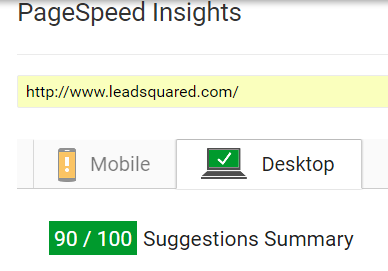
b) Less bounce rate:
The % of users who come to your site – visit only one particular page and leave without taking any action. Or, they stay on your site for less than 10sec. It is the perfect indicator of how engaging your website is. It definitely impacts your SEO.
c) Technical errors:
Crawl errors and 404 errors on your website can negatively impact SEO. Make sure your site has less than 2% error 404. The rate at which your site is getting crawled also impacts your SERP ranking. So log into Google Search Console and read up on what errors you can avoid.
d) Internal linking:
Aim for natural link building. Connect key pages in your website internally to boost the overall SEO. Take care however – unnecessary and unnatural links can have a negative impact. So make sure that the links you post are absolutely relevant.
Do you recommend social bookmarking and article submission to rank keywords?
Frankly, I do not recommend social bookmarking or article submission as it will not always have impact on your business. But in highly competitive industries, people execute it to gain that 0.1% advantage. So it completely depends on which industry you want to execute it in.
I firmly believe that better results can be achieved by doing more fundamental things – like unique content, engaging content and using that for link building. And well, neither social bookmarking nor article submission facilitate user-engagement.
What do you suggest as best off -page SEO tactics for Real Estate businesses?
SEO for real -estate is location dependent. So focus on listing in local directories. Identify where your target market is looking for you and then make sure you are present there. Other than that, try thinking of offline methods to capture the attention of your audience.
Does the number of characters in meta title have SEO ranking impact?
Well, this is rather a widely debated question. You see, Google only displays the first 50 to 60 characters on the title and the rest comes as elipses “…”. It tells the user that there is more to the title and if the user is pressed for time, he might not click on that title.
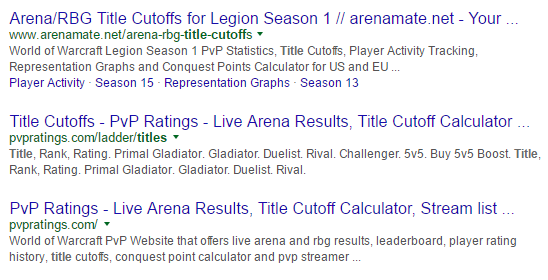
That being said, length is not a hard and fast rule. In social media, longer titles are infact seen as more advantageous. Also, some SEOs believe that Google does use the keywords in your title for ranking, even if it is cut off from display.
So focus on a title that has a primary keyword, secondary keyword and your brand name. Ensure that it captures the essence of your article and also gains audience attention. The rest will fall in place.
You can also check out Moz’s post on Title Tags for more reference.
Are there any black hat SEO tactics that you suggest for link building to boost rankings initially until a team can be built that can produce high quality content which gets automatic links/traffic?
Well, No. I do not recommend black-hat SEO tactics at all. Google might not notice you today, but with another change in algorithm, you might get penalized and get pushed far far down the SERP. The best way to boost ranking is to do it right – with genuine link building from authority sites and generating high-quality and engaging content. It is ok if it takes time. Better late than a Google penalty.
How to do Off-page SEO for educational institute?
a) Don’t link to root domain only:
Bulk of your content sits elsewhere. Identify where it is and link the relevant pages accordingly. Linking to only one page, which does not have the relevant content will affect your SEO drastically.
b) Anchor key -word stuffing:
Don’t use the key-word you want to rank for and use it mindlessly as anchor text. It will only be key-word stuffing that Google frowns down upon.
c) Domain diversity:
Having more unique C block domains help. Let me tell you why.
Say you are competing for being the Mayor in your city and you go around asking for votes. Now, when the ballot is finally counted, it is seen that only people very very close to your house (may be two blocks) have voted for you, while the rest of the others haven’t. For an impartial judge, it would seem very fishy and you might not get elected.
In the internet, the C-block is your neighborhood. If you keep getting links only from your closest neighbors, it seems very fishy. It is like only Mrs. Next-door speaking highly of you to all and sundry.
Well, so go ahead and charm the other inhabitants of the internet as well and get them to link back to you. That is what diversity in domain is all about. It definitely impacts SEO ranking.
d) Maintain a link-building speed:
It shouldn’t be that there is a sudden burst in link-building from your site and then nothing! Keep up a steady pace and ensure that your links get built regularly over time.
How to leverage print/mass media campaign?
As already explained, any print or mass media campaign has to be in sync with your digital efforts. So before you release your campaign, predict the impact your campaign will have on the online search queries and generate content accordingly.
Would you advise creating microsites?
I shall first start by telling you what a Microsite is. A microsite is a small collection of pages (or a single page) that is dedicated to one sole purpose – interact with users in a creative way. It could be by setting up a steady stream of creative content or dedicated wholly to one particular event. Typically, it does not have the same domain name as that of your company website.
Now, as to whether you should have a microsite, let me ask you this – what is your objective in creating one? Is it to improve your ranking? Is it to engage your users? Or do you want an interesting way to handle a product or a launch?
Once you have identified the objective, remember that before you launch it, you will have to have a steady stream of content ready to keep it alive. No one interacts with a site that is not regularly updated. And worse, if your microsite dies – so does your audience following and their regard for your product.
So yes, I recommend creating microsites- but only if you have the bandwidth and content to keep it going. Otherwise, it will just backfire spectacularly on your product and your site will just be among numerous others that faded out of existence.
What are some best practices for browser push notifications? (frequency, time of the day, content etc.)?
The first rule of push notifications, as with any user-company interaction, is to add value. It could be about a new offer, or the latest breaking news or even a reminder (like say, for this webinar). Regardless, if the user finds value in it, he will definitely be more inclined to open it.
The frequency, time of day and content for these push notifications are something that you have to decide. It is typically only for urgent notifications that you want your buyer to know about.
Here are some examples.
- For an ecommerce company, it could be notifications about a flash sale
- For news sites, it can be the latest breaking news alerts.
- For sports channels, you can focus on sending updates of scores (Eg. Sindhu Vs Marin 11-21).
Price alerts for travel websites – If the airfare drops for a particular route and you have leads interested in travelling there, then you can send notifications to those leads about the updated price.
Time-sensitive alerts that are relevant to your leads are the best kind of notifications to send. Remember that push notifications can still be classified as a hack because it is “new” and is not used by everybody yet. Therefore it is definitely an added advantage to your business.
How do I ensure that my subscribers don’t unsubscribe because of push notifications?
The trick is to send them notifications that are intent-driven and highly relevant. As previously explained, it will vary from industry to industry and also change depending on the target segment. Remember, the basic idea behind push notifications is customer engagement.
How to improve bounce rate? Will having a sign up form help reduce it?
The best way to improve bounce rate is with engaging, relevant content. Use high- quality images and pertinent information to keep your user interested in your site. With internal linking, you can guide him to other pages in your site as well.
Images, for example, can go a long way in capturing the attention of a user. It is definitely better appreciated than long form content! You can also opt for videos (so long as they don’t hamper your page load time) to give the user interesting content.
Coming to sign-up forms, they might not always improve bounce rate. Users sign-up only if they think the content is interesting and get solid value out of it. Say a user lands on your page and glances at your content. If, suppose he doesn’t think it relevant or useful to him (or worse, he finds it too boring to read), he will simply bounce off – regardless of the form you have!
So focus on value-adding content that is engaging and interesting. You can also get more ideas for conversion optimization here.
What is your view on re-marketing banners?
Re-marketing banners can be a great way to cross-sell or resell. However take care that once a buyer has already bought your product, you don’t chase him to buy the same product again. There should be an extra benefit attached to it. It could be a 10% off on the next buy, it could be free sample of a higher end product or it could be just a complimentary white paper download (that is unique).
Also remember to space out your re marketing ads. The frequency with which he sees your ad can have a huge impact on his buying decision.
Could webinars work for B2C?
That is a very unique idea. Pretty interesting that I have not come across yet. The success of the webinar will entirely depend on your product, the kind of content you present and the target audience. The content presented should be important enough or big enough for your audience to participate in.
Otherwise, you can always try offline events, roadshows etc, and explore sponsorship options.. to connect with your audience.
How do you use LinkedIn for B2B growth hacking? Any examples?
The biggest advantage with LinkedIn is that it is a professional network. It is a community where your content doesn’t have to compete for attention against a wide array of other distracting, unrelated content. Here is how you can use LinkedIn
a) Ads in LinkedIn:
Personally, I have found LinkedIn ads more expensive than other channels. However, you can definitely give it a shot. There are a good number of companies that use LinkedIn ads regularly and benefit from it.
b) LinkedIn Groups:
Identify the group or community that is relevant to your product and make sure you are a member there. Participate actively in those groups. Share good content, answer queries, comment (pertinently) on the posts shared and engage with the members in the community.
c) LinkedIn Pulse:
You can also look to writing original content on the LinkedIn platform. LinkedIn pulse is widely read by a vast professional network, that is not limited to only your industry. So if your post gets shared and goes viral, the mileage it will give your product would be amazing.
Any hacks for mobile SEO for local market? Or general mobile SEO?
Well, a SEO hack is to make your page mobile friendly. Google has recently come up with a little lightening symbol next to a mobile friendly page. It will appear everytime you view the SERP though your mobile. It looks something like this:
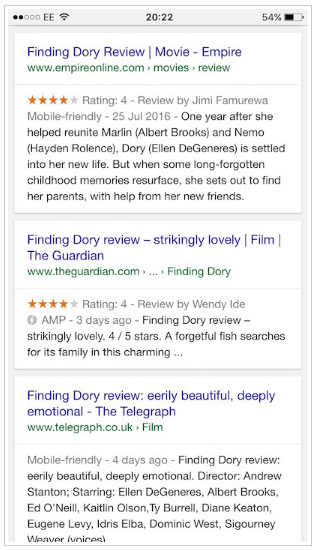
As you can see, the tiny AMP symbol on the second site is visible.
Now, it has not announced that these pages will be more favored more on the SERP (yet?) but since the ultimate aim for Google is to provide a great user experience for it’s users, while showing relevant content, building your webpage with the same goal will help. You can read more about it here.
How do I market without letting people know that I am actually marketing my product?
Understand your target audience. Your product was designed to tackle a particular pain-point that your target audience face. Propose genuine remedies to that problem through great content, sharing valuable tips and simple ideas. Of course you can mention your product there as well, but it might not be necessary.
With educational content that is highly targeted, you can get your audience’s attention and create a thought leadership for your product.
Would you recommend using Search and Display together?
In the same ad group, it is not recommended to do search and display together because the metrics are so different. In display you hardly get even 0.5% CTR. But in search, if you are ranking no.1 on the Google SERP, and still you get 3% CTR, then it is still not good enough.
So, when these two different strategies are mixed, the metrics with which you can judge your campaign performance becomes a little confused. If you do want to run a display and a search ad, then do it in separate ad groups.
Which objective works in Facebook Advertising? Typically, website conversions are ok. However, is there anything else you could suggest?
So, the ideal objective keeps changing. Unless you test it out, you will never know. I have seen OCPM work rather well. Also, CPC works. If conversion is your goal then, CPC can actually help you with it at a lower cost. It also depends on what kind of site/product you have. Here is how choosing the right objective on Facebook can help you campaign.
I know the number of leads I get from Facebook. However, I am unable to identify who these leads are or track them. Please help.
Your landing page tracking will take care of it. Check the UTM parameters and ensure that your incoming leads are tracked. Various software (like LeadSquared) help with lead capture and tracking.
Also try using lead ad forms on Facebook. It helps you capture the user data directly without guiding them to your website or landing page. That is, it is easier for the user to convert – which means more conversions for you.
In AdWords should we keep the keyword bidding around first page bid or average CPC?
A very interesting question. It completely depends upon your objective. I have done both – initially going aggressive and opting for first page bid and then once ranking is steady, opting for CPC. When you choose CPC, keep in mind not to use Broad Match Keywords. That would be recipe for disaster. You can find more tips on Google AdWords here.
I have a single page website with good content and the page has what exactly people are looking for. In this case what do you think whether I should consider bounce rate or avg time on site?
Average time on site. Focus on average time spent on site, though bounce rate would be for SEO purposes. Also, as far as single page websites go, I am not a great fan of them. They send a very different message to the crawler. Say you have 5 different products/ offerings and all of them are present on the same page. Then the crawler clubs them all in the same bucket while trying to figure out the content for the page. On the other hand, if you have 5 different pages, one for each of them, then it can get tracked easily.
For a furniture industry, what is the everyday budget to have for SEM? How many keywords should we have?
On a daily basis, don’t spend less than 5,000 a day on your campaigns. Only that will help you with getting some number of leads. Also spend around 30,000 to 50,000 rs on every campaign before you deem it a failure. Only then can you get a better sense of how well the campaign has performed.
For a big industry like furniture that has high search volume, begin with around 10K to 20K, with about 5 to 10 keywords in each ad group. Remember to have extremely targeted ad copies and keywords.
Could you please tell me the difference between B2B and B2C strategy?
For B2C, you have a large audience. Each of them perceive your product differently and will have a different opinion of it. It could be consumer good, food, cosmetics anything – your audience is varied and diverse. So your strategy will have to be wide and all encompassing – it should speak to every person in that diverse target list and convince them to give your product a go.
Also, remember the B2C market can be very fickle. There is a lot of scope to cross-sell and upsell. For eg. a lead using a particular brand of shampoo can try your brand because of the ad she has seen. Regardless of how well she likes it, the chances of her shifting to competition is pretty high.
The B2B startegy is very very specific and targeted. The brand loyalty here can be higher, depending upon your product performance. It takes a lot more time to win a customer and the channels you use to market your product are starkly different.
Can you suggest some hacks to increase quality back links?
Create unique content – surveys, infographics, a lot of primary data that your audience can get only through you. The key is to however, give it away for free – behind a submission form. If the quality of your content is good and the value your audience get from it is good, they will automatically share the content!
We are in a niche business, target segment comprises of tech savvy and non tech savvy, how does one decide the best strategy to reach them?
It is good that you have classified your audience thus – for your strategy to reach both sections will vary.
For the tech savvy, Google AdWords, Facebook Ads, push notifications through app would work. Here are some online marketing tips that would help you. For the non -tech savvy, stick to print and other offline campaigns. Maybe you could participate in events that have your audience attending in large numbers.
One thing that is uniform for both the segments is – content. With educative, informative content, you can definitely get attention. How you present that content though, will depend upon whether your audience are present in that channel or not.
Is it becoming important to have website which is mobile friendly ?
Absolutely! The number of searches through mobile has drastically increased. More people tend to look to their phone screens to punch out a search query rather than wait to go to their desktop. Just take a look at the search trends in the past few years:
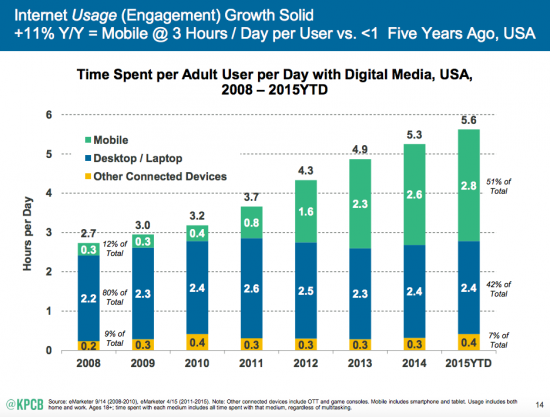
Imagine this – a user types in a search query, finds your website among those he wants to check out and clicks on it. Well, it is safe to suppose that he is doing it through his mobile phone (you just saw the data right?). Now, because your site is not optimized, he impatiently waits for the page to load – and when it doesn’t, he leaves!
That, right there, could be the no.1 reason for you having high bounce rates and less traffic to your site. Also, let us not forget something else – Google prefers mobile optimized pages to others. So, it would show your page farther down in the SERP, when compared to a mobile optimized site.
So yes, Optimizing your website and landing pages for mobile is a good idea and is absolutely necessary.
I want my one keyword to be top 10 on the Google SERP. Is there a fast way to achieve that?
Ranking in the first page of Google Search Results involves a number of factors. It is a combination of all the growth hacking tips that we have discussed so far – SEO, AdWords, content etc. that will help you rank. It is not always quick. But with smart growth hacking, you definitely can achieve it!









